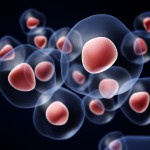The stage is set. You’ve spent days setting up this experiment. Your bench is spotless. All the materials you need to finally collect data are laid neatly before you. You fetch your cells from the incubator, add your detection reagents, and carefully slide the assay plate into the luminometer. It whirs and buzzes, and data begin to appear on the computer screen. But wait!

Don’t let this dramatic person be you. Here are 8 tips from us on things to watch out for before you start your next luminescent assay. Make sure you’ll be getting good data before wasting precious sample!
Continue reading “Eight Considerations for Getting the Best Data from Your Luminescent Assays”
 One piece of advice you will get from our Technical Services and R&D Scientists with regard to cell-based assays is to pay attention to what you are doing. Sounds obvious, but sloppiness can easily enter into the equation. Do you always count your viable cells with a hemocytometer and trypan blue exclusion before you split a culture? Do you always make sure that each well of your plate or plates contain the same number of cells? Two of our scientists, Terry Riss and Rich Moravec, published a paper demonstrating how decisions you make in experimental setup can ultimately affect the results you obtain. A natural consequence of this is difficulty replicating experiments if you didn’t pay attention to the details during the initial experimental setup.
One piece of advice you will get from our Technical Services and R&D Scientists with regard to cell-based assays is to pay attention to what you are doing. Sounds obvious, but sloppiness can easily enter into the equation. Do you always count your viable cells with a hemocytometer and trypan blue exclusion before you split a culture? Do you always make sure that each well of your plate or plates contain the same number of cells? Two of our scientists, Terry Riss and Rich Moravec, published a paper demonstrating how decisions you make in experimental setup can ultimately affect the results you obtain. A natural consequence of this is difficulty replicating experiments if you didn’t pay attention to the details during the initial experimental setup. 